Women’s labour force participation and access to decent work are important and necessary elements of an inclusive and sustainable development process.
Indian women have been dropping out of the workforce for years. For three decades since liberalisation, the female labour force participation rate, or FLFPR, has been dipping. India’s FLFPR declined from 39.7% in 2004-05 to 28.9% in 2011-12, to a further 23% in 2017-18.
Women continue to face many barriers to enter labour market and to access decent work. They disproportionately face a range of multiple challenges relating to access to employment, choice of work, working conditions, employment security, wage parity, discrimination, and balancing the competing burdens of work and family responsibilities.
In addition, women are heavily represented in the informal economy where their exposure to risk of exploitation is usually greatest and they have the least formal protection.
The Periodic Labour Force Survey (PLFS) Report 2022-23 released by the Ministry of Statistics and Programme Implementation shows that the Female Labour Force Participation Rate in the country has improved significantly by 4.2 percentage points to 37% in 2023, as per ‘usual status’ concept of measuring labour force participation.
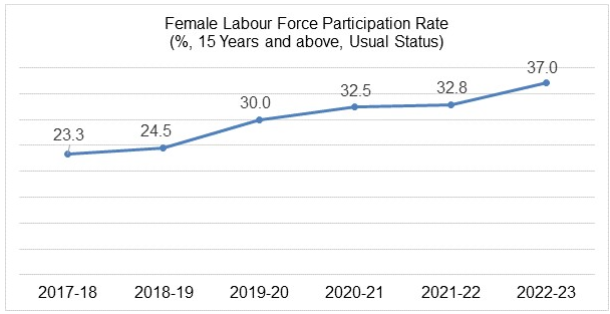
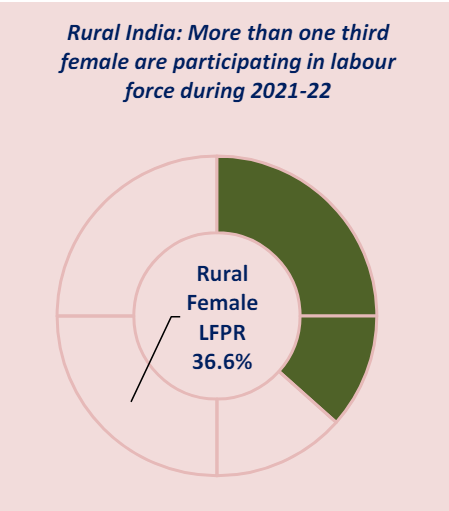
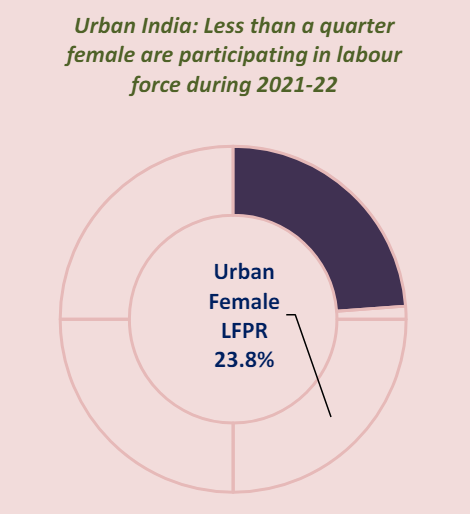
What explains low participation of women to jobs in India?
The decision of and ability for women to participate in the labour force is the outcome of various economic and social factors that interact in a complex fashion at both the household and macrolevel. Based on global evidence, some of the most important drivers include educational attainment, fertility rates and the age of marriage, economic growth/cyclical effects, and urbanization. In addition to these issues, social norms determining the role of women in the public domain continue to affect outcomes.
In India, much of the discussion on the falling trends has focused on four key explanations: 1) rising educational enrolment of young women; 2) lack of employment opportunities; 3) effect of household income on participation; and 4) measurement.
It is interesting to note that significant proportion of women usually engaged in domestic duties reported their willingness to accept work if the work was made available at their household premises.
Over the last decade or so, India has made considerable progress in increasing access to education for girls as increasing numbers of women of working age are enrolling in secondary schools.
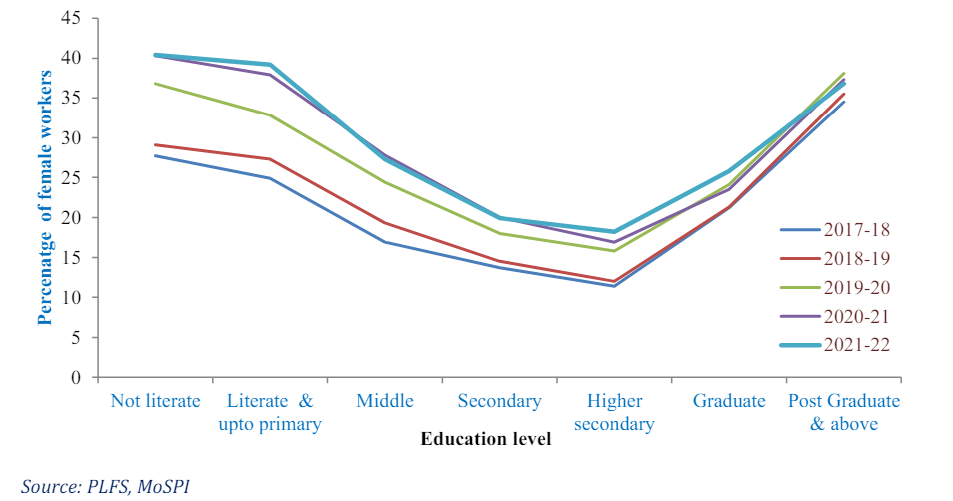
As can be seen, over a period of time, it is evident that women at the extremes, either illiterate or highly-literate that is, post-graduate are the ones who are working and participating in the labour force.
Further, if we see the vocational training received by the females, we can see that textiles and handlooms, apparels is the most prevalent field of training among rural females followed by the IT-ITeS. Around 30.1% of total rural female who received vocational/technical, are trained in Textiles and handlooms, apparels field. Around 30.2% of total urban females who received vocational/technical, are trained in IT-ITeS field. Around 5.0% rural females and 8.6% urban females received training in Beauty and wellness field.
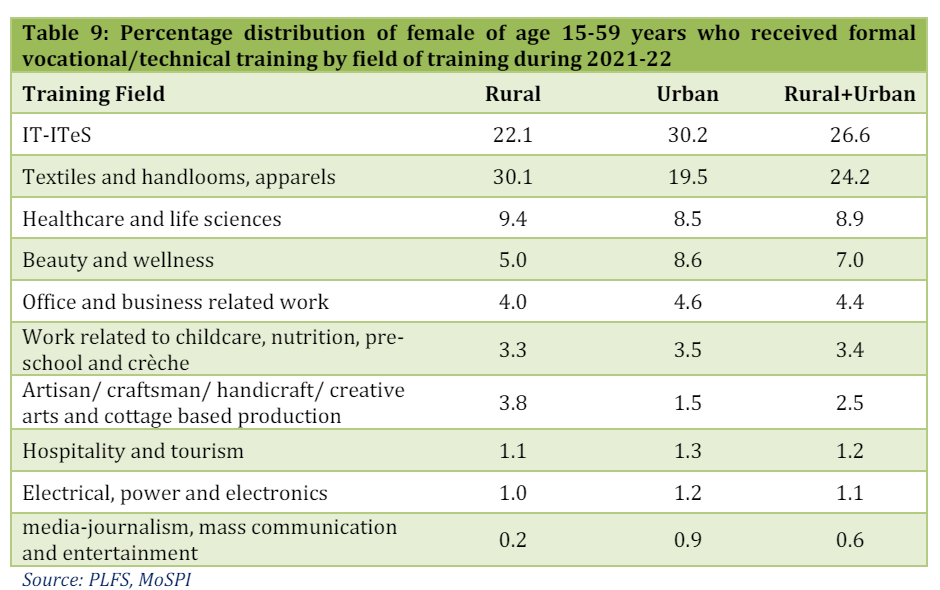
Nonetheless, the nature of economic growth in the country has meant that jobs were not created in large numbers in sectors that could readily absorb women, especially for those in rural areas. Despite inadequate job creation, household incomes did rise, which potentially reduced women’s participation, especially in subsidiary activities (“income effect”) due to change in preferences.
Finally, though most women in India work and contribute to the economy in one form or another, much of their work is not documented or accounted for in official statistics, and thus women’s work tends to be under-reported.
In India, a substantially high proportion of females report their activity status as attending to domestic duties.
Reasons reported by females (in %) for not being in labour force
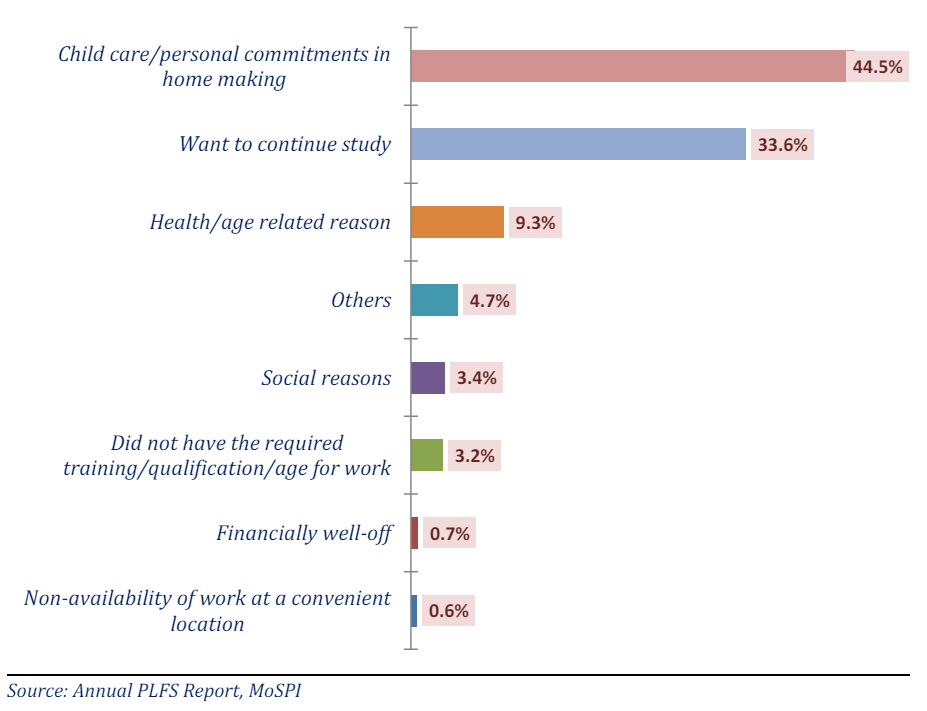
Where are women working?
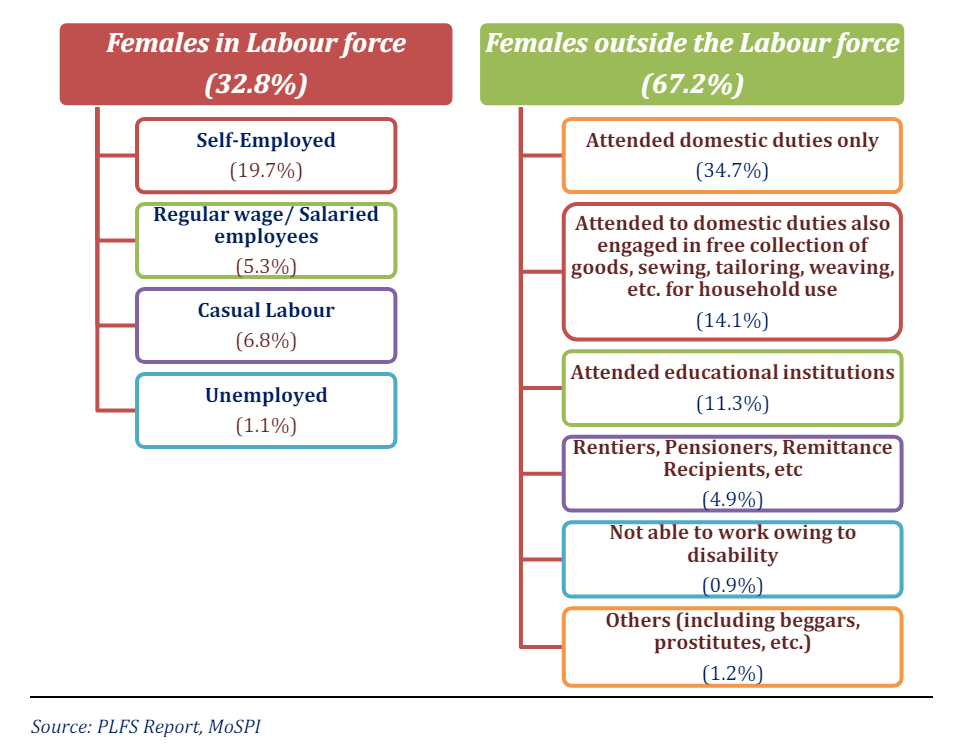
Sectoral Distribution of working women
By and large, the working women in India are found to the one who are self-employed; casual worker; and, some of them are doing a regular salaried job. The figures below demonstrate the percentage of rural and urban women in each sector as per the category of employment.



Way Forward
If we want to increase the number of women at work or female labour force participation rate in India then we require to have infrastructure such as creche facilities, transport and safety measures; in jobs we need to provide equal pay, flexibility such as hybrid mode; and, no discrimination.
However, most importantly, what we need is a societal change in mindset that will ensure equal division of domestic duties and responsibilities between a man and a woman. This will provide space and time to Indian women to work by reducing the burden.
